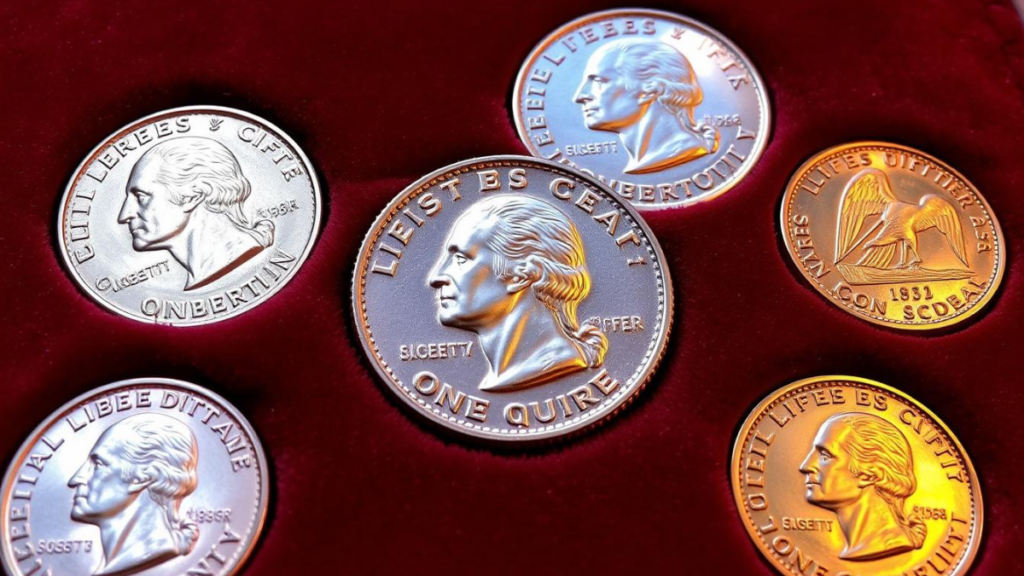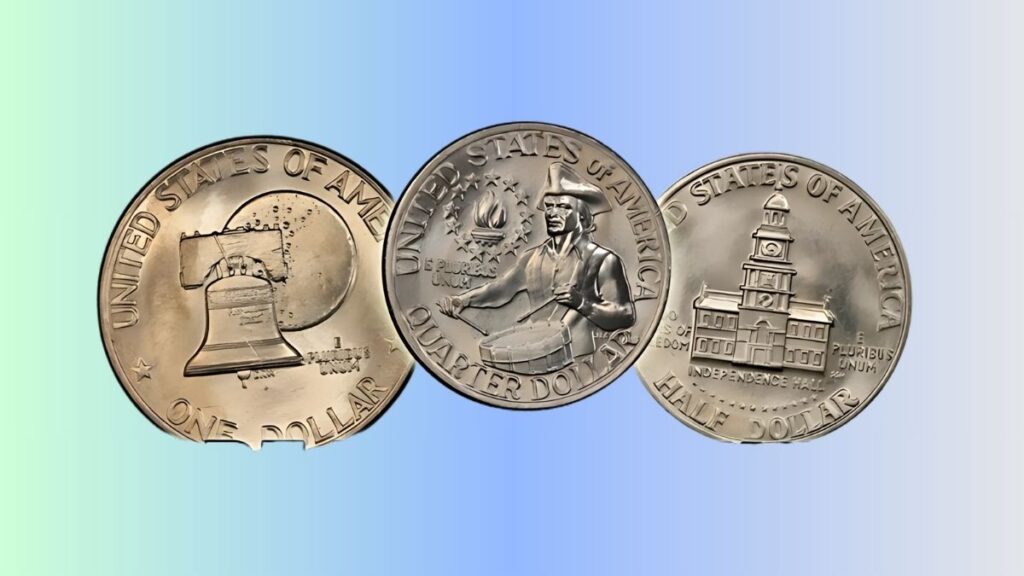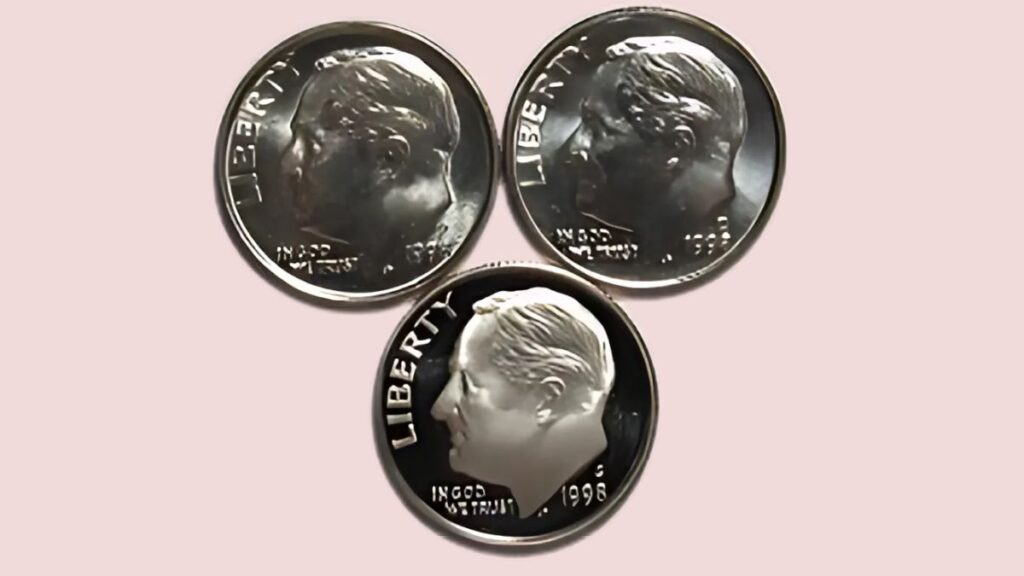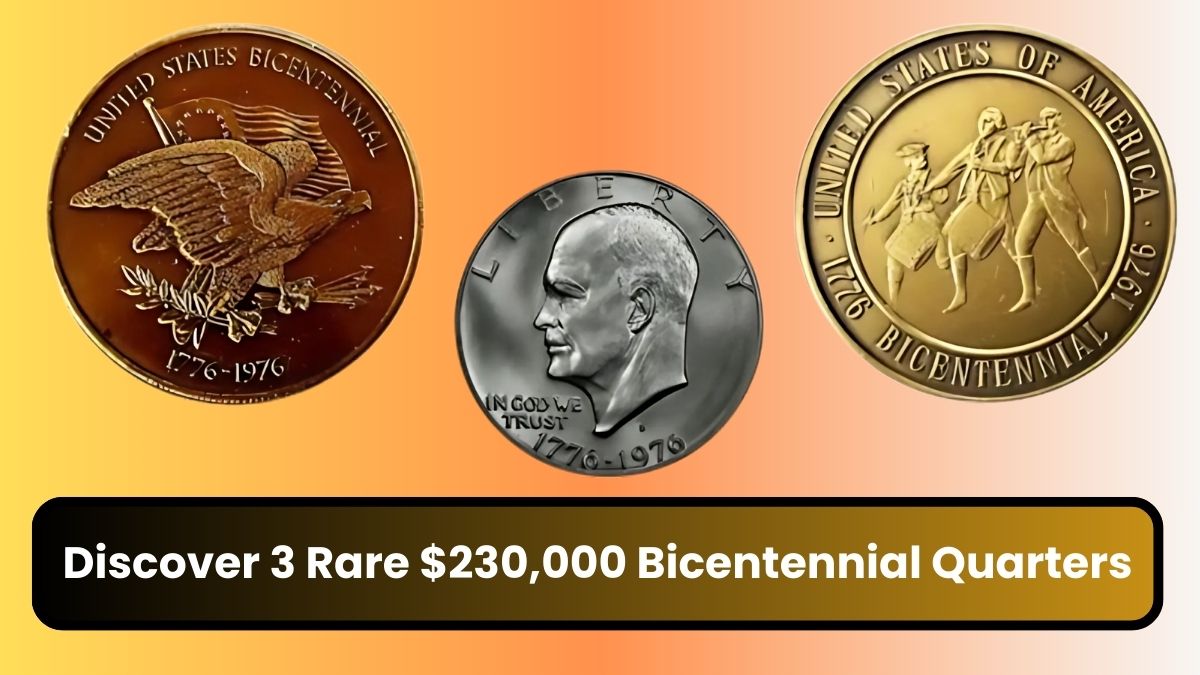The thrill of discovering coins can turn what is usually an ordinary day into an exciting treasure hunt. Recently, attention has been drawn to a rare bicentennial quarter that could be worth up to $230,000. In addition, there are many other coins that may be hidden among the coins you spend and can be worth a lot more. In this article, we will talk about these coins, what makes them special, and how to identify them.
Bicentennial Quarter: A Hidden Treasure
The 1976 Bicentennial Quarter was released to celebrate the 200th anniversary of the formation of the United States. But these coins have become a substantial collector’s treasure. While the majority of Bicentennial Quarters are just typical 25-cent coins, some examples do have features or characteristics that make them valuable.
What Makes the Bicentennial Quarter Special?
This rare bicentennial quarter features its own separate D mintmark for the Denver Mint, and their production mistakes can significantly increase their value. These can be the errors:
- Double Die Errors: These occur when the coin is double struck, creating a double image on the design.
- Off-center Strikes: When the coins do not land exactly where they should when being minted, parts of the design may be missing or misaligned.
- Grade: An excellent penny can fetch a high price.
Coin dealers advise you to take a close look at the coins you spend, as some of these rare coins are worth hundreds.
Other Undiscovered Wealth Coins
With the possible exception of the Bicentennial quarter, there are probably fewer
1943 Bronze Lincoln Penny
This coin is very famous. In 1943, it was decided to make a steel penny, but some coins were accidentally made on a bronze plate. These coins can be worth $400,000 to $840,000.
2000-P Sacagawea Dollar (Cheerios Variety)
This coin is known as the ‘Cheerios Dollar’, which was part of a promotional giveaway by General Mills. It had a special design on its reverse side, and this coin can sell for up to $30,000.
1974 Aluminum Penny
This was an experimental coin, which was never released to the general public. Only a few coins were saved from being destroyed, and they can be worth $250,000 to $300,000.
| Coin Name | Mint Year | Approximate Value | Unique Features |
| Bicentennial Quarter | 1976 | Up to $230,000 | Errors like double die or off-center |
| 1943 Bronze Lincoln Penny | 1943 | $400,000 – $840,000 | Struck on bronze planchets |
| 2000-P Sacagawea Dollar | 2000 | Up to $30,000 | Enhanced tail feathers |
| 1974 Aluminum Penny | 1974 | $250,000-$300,000 | Experimental coin |
Challenges in collecting rare coins

Collecting these rare coins is not easy. Some of the important problems that come up during coin collecting are:
- Due to the small supply, a collector will travel the country searching for coins.
- Challenging to identify real coins from all fake and ordinary coins.
- The others require an advanced level of knowledge in areas such as minting errors, die varieties, and other fine details that are difficult to develop.
- Visiting different places raises costs and capital expenditures.
- The coins may not have the value increase that they should and therefore need to sell for a loss of generalisation.
- They are, as well, important to keep up with your rare coin condition and grade. It needs to be found out which detail can be reduced with a little scratching.
How do you know the real value of your coin?

- By a qualified person, it should then be made available as proof of the value of the coin.
- Coin graders/dealers are people looking at coins. It helps in giving the exact value of your coins as well when your coins are getting appraised by specialists.
- Lastly, perhaps you will consider having your coin graded by a professional grading company like PCGS or NGC.
- This involves a professional review and endorsement or approval.
- Two coins with only minor differences in condition or minting details may very easily have a price gap far more substantial than between them.
- Experts can help you get through the collectors market. It gives you an overview of how much your coins are worth.
Accepting the Enthusiasm of Coin Gathering

Coin collecting is not just about finding lost treasures; it has become an interesting hobby and a symbol of respect for the history and art of American currency. By understanding the story and significance of each coin, collectors can learn the history of currency and realize its impact on American cultural identity.
Conclusion
Discovering coins you spend every day could bury some hidden riches willing to get you excited and your pockets fuller. Coins like the Bicentennial Quarter and the 1943 bronze Lincoln penny can go for thousands or even millions of dollars. So the next time you pull coins out of your pocket, examine them closely because you just may be in possession of a rare piece of currency. A treasure will appear in a jar at the back of a cupboard or coins in your pocket, which could become part of something larger.
FAQ
What is the value of a rare bicentennial quarter?
A quarter struck in Philadelphia and graded MS68 brought $4,500.
What is the uncommon bicentennial quarter error from 1776 to 1976?
This particular bicentennial quarter from 1776 to 1976 emerges after being stricken through a piece of fabric. This strange mistake coin may fetch up to $100 and is collectible.
Where can I sell my quarters for the Bicentennial?
Bicentennial quarters can be purchased and sold at physical coin stores or online marketplaces like eBay.
Which quarter has a current value of $35,000?
Silver Washington Quarter (MS68), 1947
Why do Bicentennial quarters have such high value?
Because of their historical value and scarcity, collectors are willing to pay more for rare coins.

